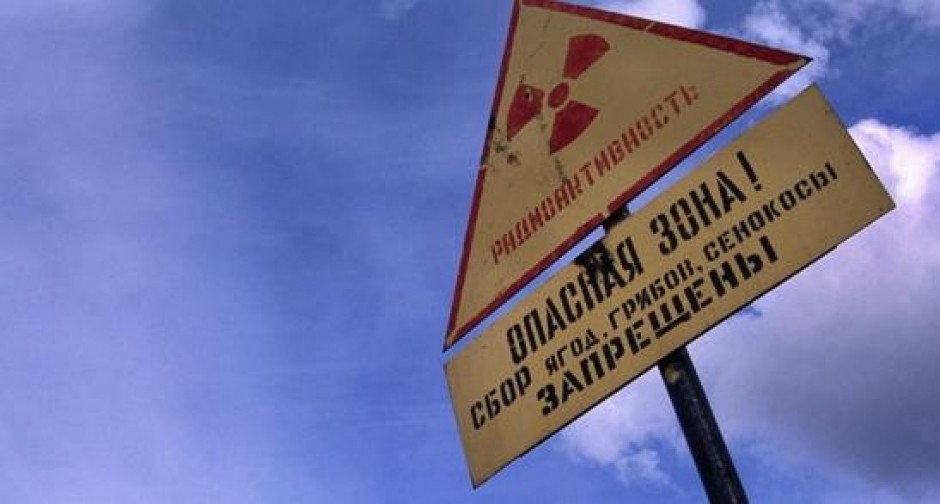
The system built to manage Russia’s nuclear legacy is crumbling, our new report shows
Our op-ed originally appeared in The Moscow Times. For more than three decades, Russia has been burdened with the remains of the Soviet ...
News

Publish date: August 22, 2018
Written by: Anna Kireeva, Charles Digges
News
Following news that Russia may be searching for a nuclear powered cruise missile that may have been lost at sea, reported first by the American news outlet CNBC, Bellona is urging Norway’s Ministry of Foreign Affairs to clarify the situation with Moscow.
According to the network, which is a respected national broadcaster in the United States, Russian crews are attempting to recover a missile, powered by an onboard nuclear reactor burning uranium, which was test launched in November and went astray in the region of the Barents Sea.
CNBC cited US intelligence reports, and reported three vessels will participate in recovering the missile – one of which is specially equipped to handle the radioactive material in the missiles core.
The description of the missile, as reported by CNBC, matches weapons described by President Vladimir Putin during a darkly threatening appearance in March just before his fourth reelection on an uncontested ballot. During the speech, which included animated graphics of the missiles hitting the United States, Putin boasted that the weapons had unlimited range.
But according to the intelligence reports viewed by CNBC, the missiles keep crashing. All four tests conducted between November and February resulted in crashes, anonymous intelligence officials told the network, with the longest flight lasting a mere 35 kilometers after the missile went off course and crashed.
The intelligence reports, CNBC reported, did not make any mention of any potential risks to the environment or human health emerging from the apparent missile failure.
But whether or not Russia is, in fact, scrambling to recover a lost missile with a nuclear power plant onboard struck some Bellona experts as dubious.
Andrei Zolotkov, who heads Bellona’s Murmansk office, went so far as to say the report sounded “fake.” The fact that the intelligence reports cited by CNBC made no mention of radioactive fallout from the apparent crash struck Zolotkov as suspicious.
“This simply cannot be,” he said. Radiation monitoring stations, he said, have registered no traces of iodine, cesium or strontium, which are all products of uranium fision.
 Nils Bøhmer, Bellona's executive director. (Photo: Bellona)
Photo: Tone foss aspevoll/bellona
Nils Bøhmer, Bellona's executive director. (Photo: Bellona)
Photo: Tone foss aspevoll/bellona
Nils Bøhmer, Bellona’s general director and nuclear physicist, wants more information, and says he plans to urge Norway’s foreign ministry to get an official reaction from Moscow. The questions raised by the CNBC report, he says, are many.
“The report says there were four launches of nuclear missiles– and that they will raise one,” said Bøhmer. “Where are the others?”
“Of course we are concerned that there could be missiles with nuclear reactors at the bottom of the Barents Sea,” he added. “Given that Russia plans to continue testing these missiles, we run the risk of there being yet more reactors at the bottom of arctic oceans.”
He noted that Norway is scheduled to hold bilateral talks with Russia this fall, and said the issue of nuclear powered cruise missiles going down in the Arctic should be on the agenda.
On-the-record sources quoted by CNBC had doubts that the apparent missile crash could pass without some form of radioactive contamination.
“It goes without saying that if you fire a missile with a nuclear engine or energy source, that nuclear material will end up wherever that missile ends up,” Hans Kristensen, director of the Nuclear Information Project at the Federation of American Scientists, told CNBC.
“If this missile was lost at sea and recovered in full, then you might hypothetically be able to do it without pollution, I would have my doubts about that because it’s a very forceful impact when the missile crashes. I would suspect you would have leaks from it,” Kristensen added.
According to a report in the Independent Barents Observer, which includes a detailed analysis of the flight path of one of Putin’s failed missiles, Norway’s Radiation Protection Authority has sent a round of questions to Russia about the apparent search and rescue mission. The agency added that it has observed no increased levels of radioactivity, but said it would continue monitoring.
While much remains unclear, the failed missile hinted at by US intelligence is sure to raise fresh questions surrounding odd incidents of nuclear contamination that keep turning up on European radars.
Still unexplained are two incidents of iodine 131 pollution detected over Europe in January and March of 2017, neither of them remotely risky to human health, but all of which might bear some connection to Russia’s crashing nuclear powered missiles.

Our op-ed originally appeared in The Moscow Times. For more than three decades, Russia has been burdened with the remains of the Soviet ...

The United Nation’s COP30 global climate negotiations in Belém, Brazil ended this weekend with a watered-down resolution that failed to halt deforest...

For more than a week now — beginning September 23 — the Zaporizhzhia Nuclear Power Plant (ZNPP) has remained disconnected from Ukraine’s national pow...

Bellona has taken part in preparing the The World Nuclear Industry Status Report 2025 and will participate in the report’s global launch in Rome on September 22nd.